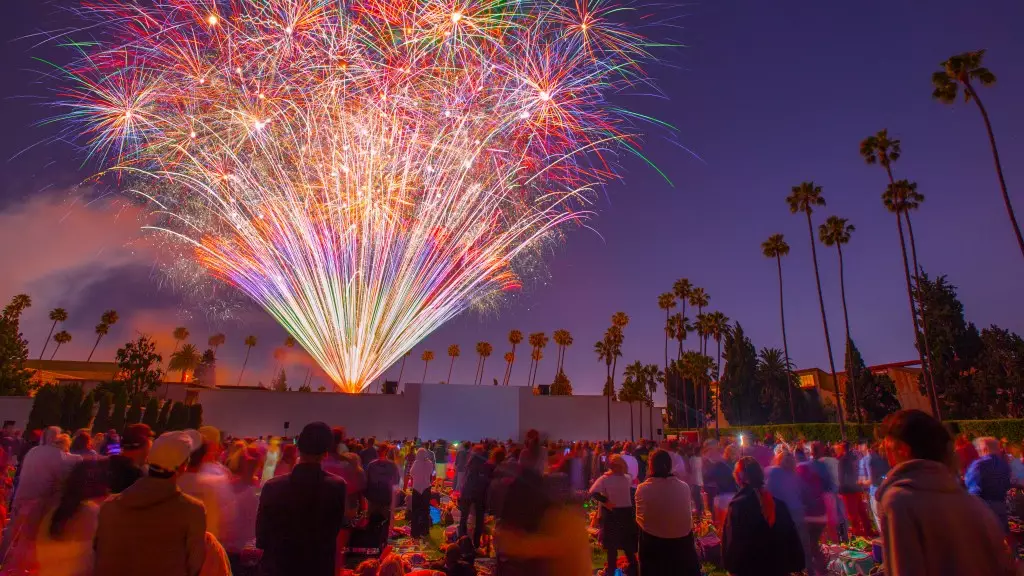Los Angeles has always been a city characterized by contrasts. The allure of Hollywood glitz runs parallel to the stark realities faced by its residents. As the summer sun blazes down on a Los Angeles steeped in tension between protest and celebration, one cannot ignore the juxtaposition of the collective struggle against systemic issues and the joy of cultural experiences that persist despite adversity.
The Cultural Heartbeat Amidst Discontent
At the center of this cultural landscape lies Cinespia, an organization that has redefined outdoor cinema experiences in the city over the past decade. Navid Sinaki, the creative director of Cinespia, highlights an underlying truth about the power of community — in the face of political unrest and climate devastation, the shared experience of film can punctuate our struggles with moments of respite. While protests swell across Los Angeles, Cinespia’s summer screenings at the Hollywood Forever Cemetery promise an escape, albeit a transformative one where pain and celebration are woven together.
Sinaki’s reflections encapsulate the duality of attending a film under the flickering stars while surrounded by the historical gravestones. He describes the cemetery not just as a resting place but as a sanctuary. This perspective shifts the narrative: instead of being merely an overwhelming symbol of death, it becomes a canvas where life is celebrated amid communal grief. The tension is palpable, and perhaps that energy — “electric” as Sinaki describes it — is what makes these gatherings not just enjoyable but essential.
Film as a Medium of Resistance
The choice of films themselves holds significant weight, acting as a barometer for societal moods. The upcoming screening of Paul Verhoeven’s provocative “Showgirls” comes with the understanding that cinema has the power to reflect, challenge, and dissect cultural norms. Sinaki’s responsibility to curate films that not only attract large crowds but also resonate with the current atmosphere of protest speaks to a greater artistic duty — to spark conversations and provoke thoughts that might otherwise remain unaddressed.
Yet, one could argue the paradox of enjoying a “party” atmosphere while the city grapples with serious issues, such as ICE raids and police militarization. It invites contemplation about the role of art in protest. Is it possible to celebrate when voices are being silenced? Or does this celebration serve as a form of resistance against the despair threatening to engulf our societal fabric?
The Political Backdrop
The disturbances in downtown Los Angeles also resonate through the voices of civic leaders like Mayor Karen Bass and Governor Gavin Newsom. Their urgent calls for restraint and the assertion of governmental authority over military deployment highlight an ongoing struggle for power within the political arena. President Trump’s decision to send troops to quell unrest was met with swift condemnation from state leaders, characterizing it as a “brazen abuse of power.” Such a tumultuous environment underscores the importance of community resilience and artistic expression as forms of civil discourse.
One must engage critically with these developments: while the fear of governmental overreach is valid, artistic platforms like Cinespia provide an invitation for collective healing. The irony of enjoying a nostalgic cult classic while the backdrop of state violence looms large indicates the complexity of the American experience. Art transforms from merely entertainment to a medium of political engagement — a mechanism through which citizens can process trauma and envision possibility amidst chaos.
Community Bonds and the Pursuit of Expression
Ultimately, the heart of Sinaki’s commitment to Cinespia lies in cultivating connections. His assertion that “fellow Angelenos coming together” can forge stronger communal identities speaks to the innate human desire for togetherness, especially during times of crisis. As tensions flare amid protests and governmental action, the sanctuary of Hollywood Forever Cemetery transforms into a congregation space where voices can harmonize in joy, resistance, and reflection.
Each screening offers a moment of levity, an antidote to the weighty concerns that plague the city. It is a collective assertion that life will continue, that joy can flourish even in the harshest of conditions. In a place where flames of discontent flicker alongside those of excitement, the people of Los Angeles exhibit a tenacity that deserves recognition — for while the world may at times feel burdensome, the bond shared through art nurtures the indomitable spirit of a community united in both struggle and celebration.


Leave a Reply